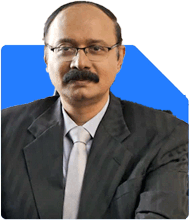Ramalingam Kalirajan |10881 Answers |Ask -Follow
Mutual Funds, Financial Planning Expert - Answered on May 14, 2024
He has an MBA in finance from the University of Madras and is a certified financial planner.
He is the director and chief financial planner at Holistic Investment, a Chennai-based firm that offers financial planning and wealth management advice.... more

Sir I am fifty years 10 years to retire.i have a htl of 29 lakhs my salary is 1.2 avg per month .68000 I am paying my emi.no savings as of now.need 5 cr corpus .my daughter higher education and her marriage is there.kindly advice .I am new to this subject.
Prioritizing Financial Goals
Retirement Corpus: With 10 years until retirement and a target of 5 crores, it's essential to start saving and investing diligently to build a substantial corpus. We'll outline a strategy to allocate your income towards retirement savings.
Daughter's Education and Marriage: Planning for your daughter's higher education and marriage requires setting aside funds separately. We'll devise a plan to address these goals alongside your retirement planning.
Retirement Planning Strategy
Monthly Savings: Given your monthly salary of 1.2 lakhs and existing EMI commitments, identify a portion of your income that you can allocate towards savings. Aim to save and invest consistently each month to build your retirement corpus.
Emergency Fund: Start by building an emergency fund to cover unexpected expenses. Aim for 6-12 months' worth of living expenses saved in a high-yield savings account or liquid fund.
Investment Portfolio: Once you've established your emergency fund, allocate a portion of your savings towards investments that offer growth potential, such as mutual funds (equity and debt), PPF, or NPS. Diversify your portfolio to manage risk effectively.
Funding Education and Marriage Expenses
Education Fund: Estimate the cost of your daughter's higher education and start setting aside funds in a separate account or investment vehicle. Consider options like education-focused mutual funds or recurring deposits to accumulate the required amount.
Marriage Fund: Similarly, estimate the expenses for your daughter's marriage and allocate savings towards this goal. You can explore investment options with moderate risk to ensure capital preservation while aiming for growth.
Seeking Professional Advice
Given your relatively late start to financial planning, consider consulting with a Certified Financial Planner who can provide personalized guidance tailored to your specific circumstances. They can help you develop a comprehensive financial plan, optimize your investments, and prioritize your goals effectively.
Taking the first step towards financial planning is crucial, and you're on the right path. By setting clear goals, creating a budget, and starting to save and invest systematically, you can work towards achieving financial security for your retirement and fulfilling your daughter's aspirations. Stay committed, stay disciplined, and keep moving forward towards your goals.
Best Regards,
K. Ramalingam, MBA, CFP,
Chief Financial Planner,
www.holisticinvestment.in
You may like to see similar questions and answers below
Ramalingam Kalirajan |10881 Answers |Ask -Follow
Mutual Funds, Financial Planning Expert - Answered on Jul 18, 2024
Ramalingam Kalirajan |10881 Answers |Ask -Follow
Mutual Funds, Financial Planning Expert - Answered on Jun 21, 2025
Ramalingam Kalirajan |10881 Answers |Ask -Follow
Mutual Funds, Financial Planning Expert - Answered on Jul 10, 2025
Ramalingam Kalirajan |10881 Answers |Ask -Follow
Mutual Funds, Financial Planning Expert - Answered on Jul 29, 2025
Dr Dipankar Dutta |1841 Answers |Ask -Follow
Tech Careers and Skill Development Expert - Answered on Dec 14, 2025
Nayagam P P |10854 Answers |Ask -Follow
Career Counsellor - Answered on Dec 14, 2025
Radheshyam Zanwar |6744 Answers |Ask -Follow
MHT-CET, IIT-JEE, NEET-UG Expert - Answered on Dec 14, 2025
Radheshyam Zanwar |6744 Answers |Ask -Follow
MHT-CET, IIT-JEE, NEET-UG Expert - Answered on Dec 14, 2025
Dr Dipankar Dutta |1841 Answers |Ask -Follow
Tech Careers and Skill Development Expert - Answered on Dec 14, 2025
Dr Dipankar Dutta |1841 Answers |Ask -Follow
Tech Careers and Skill Development Expert - Answered on Dec 13, 2025
Dr Dipankar Dutta |1841 Answers |Ask -Follow
Tech Careers and Skill Development Expert - Answered on Dec 13, 2025
Mayank Chandel |2575 Answers |Ask -Follow
IIT-JEE, NEET-UG, SAT, CLAT, CA, CS Exam Expert - Answered on Dec 13, 2025
Radheshyam Zanwar |6744 Answers |Ask -Follow
MHT-CET, IIT-JEE, NEET-UG Expert - Answered on Dec 13, 2025
Mayank Chandel |2575 Answers |Ask -Follow
IIT-JEE, NEET-UG, SAT, CLAT, CA, CS Exam Expert - Answered on Dec 13, 2025























